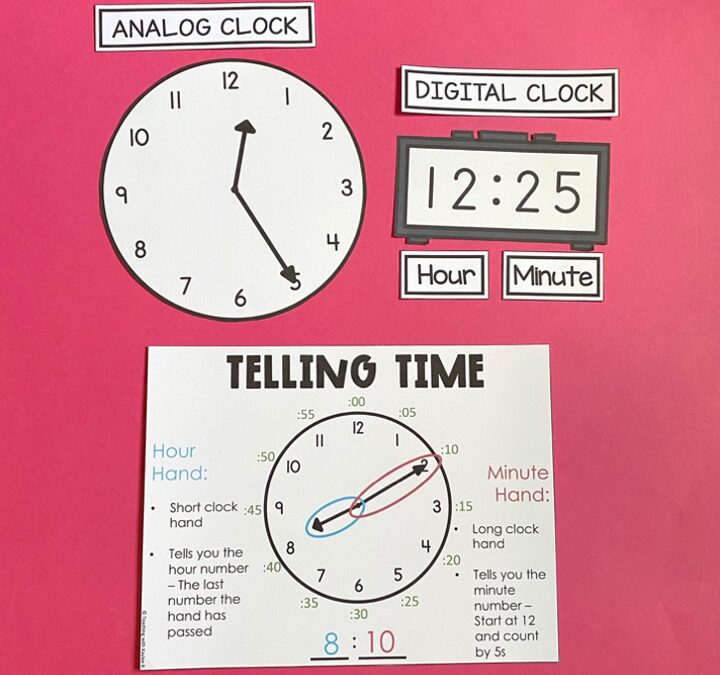Do your students struggle with telling time? Our math curriculum only teaches telling time over a couple of lessons and it is just not enough for 2nd grade students to be successful. So I changed things up. I teach telling time throughout the school year. I use telling the time activities that start out easy and then progressively get harder over the school year. By the end of the school year, my students have no trouble telling time because of all the fun telling time activities we played over the year. So today I thought I would share the telling the time activities I use with my students in our 2nd grade classroom.
Telling the Time Activities
Telling Time Math Review Board
During our calendar time, I have a math bulletin board with lots of math review activities. I use these as review activities or pre-teach opportunities. I like to introduce telling time with this bulletin board at the beginning of the school year. I teach my students that the short hand on the clock is the hour hand and the long hand is the minute hand.
I give students an easy way to remember this by writing the words “hour” and “minute” on the board. Hour is a shorter word than minute. So the hour hand is the shorter hand. I teach students that to get the hour number, you look at the last number the hour hand has passed. For the minute number, I have students start at 12 and count by 5s. I use an anchor chart to help students see this.
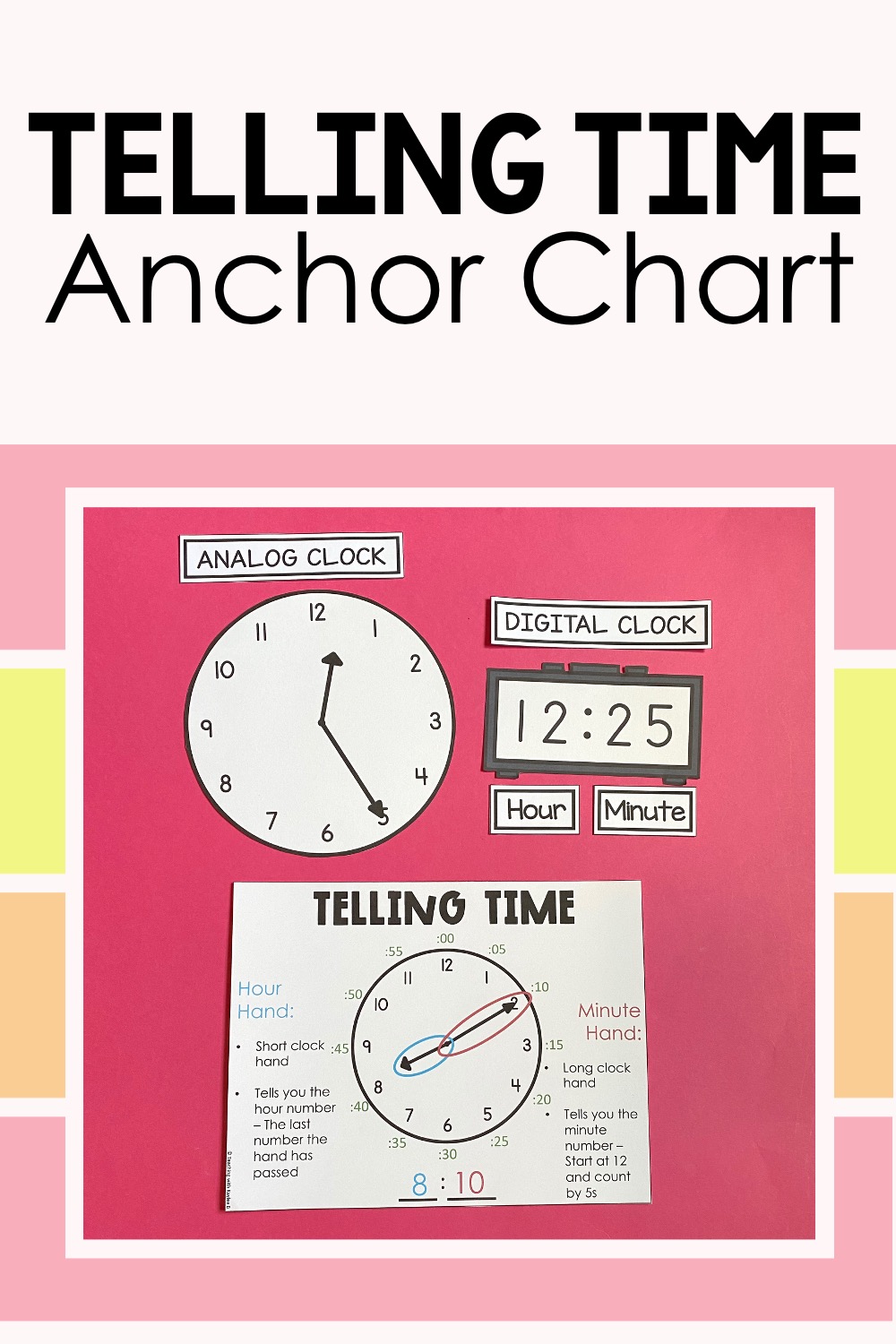
Help your students practice telling time through this telling time anchor chart.
I have a laminated sheet of paper with a blank analog clock on it on the bulletin board. Everyday I draw the hands on the clock and have students help me write the time. After a while I teach students to use wording like quarter after, half past, and quarter to.
This helps to set students up for success for the telling the time activities and games I have them do to get really good practice with telling time. Find the telling time math review board items I use here.
Fun Telling Time Activities
Telling Time Don’t Eat Pete
This game is just a paper I print out that has 12 different squares. Each square has a picture of an analog clock in it. Students play in small groups. They cover each grid square with a “marker.” You can have students use candy, dried beans, or mini erasers for this. One player moves away so they can’t hear or see. The rest of the players quietly pick one square on the grid to be “Pete.” Then the one player returns and picks up the markers one by one. As they do, they say the time that the clock shows. If they pick up the marker that is Pete, everyone says, “Don’t Eat Pete!” That player’s turn is now over and they pick a new play to start again.
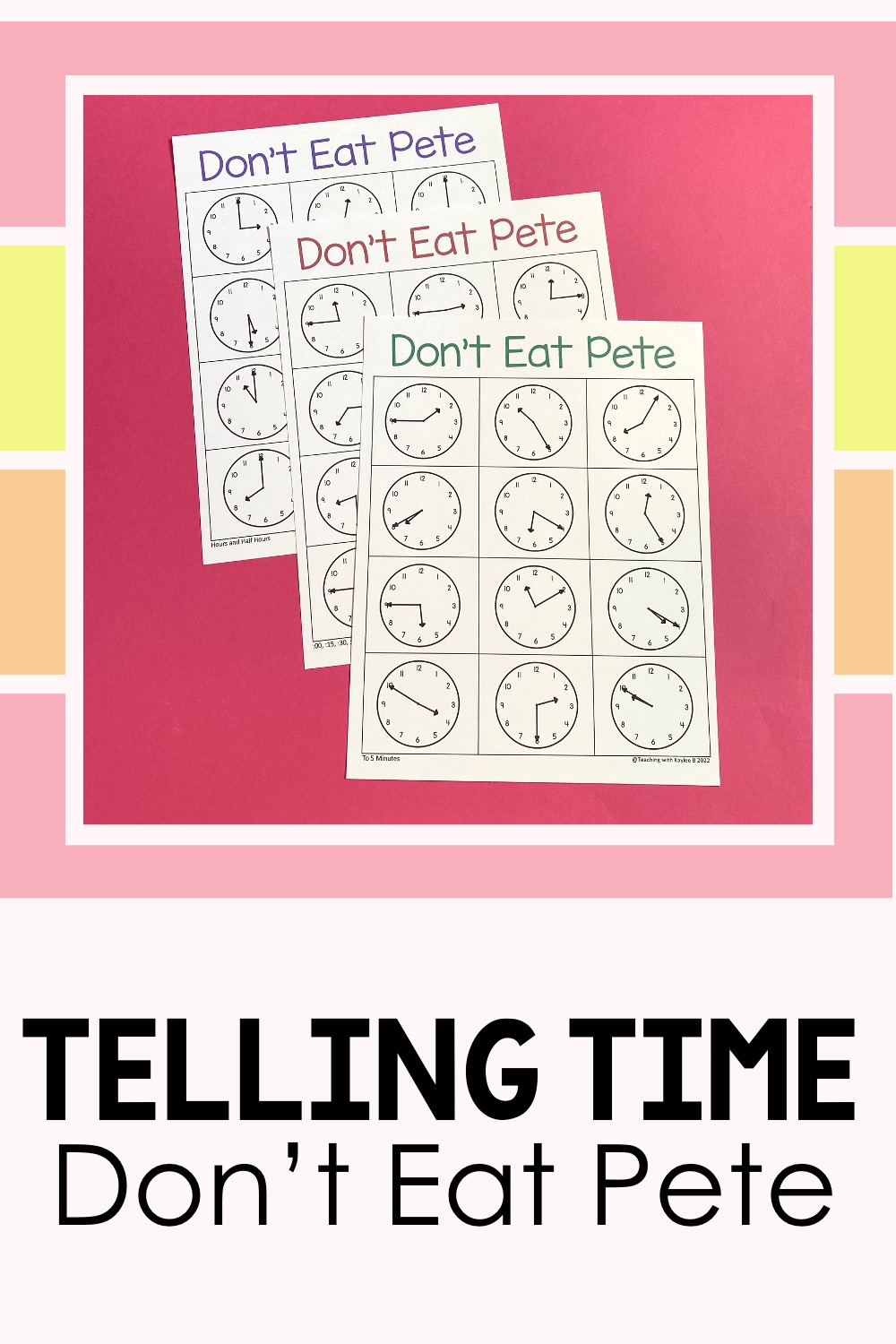
My students love this twist on the classic game of Don’t Eat Pete.
Students think this game is a lot of fun. I like it because it is low prep. All I have to do is print off the page and stick it in a sheet protector and it is ready for students. I have different versions so I can differentiate to students’ needs. I can group them for students who need practice on half hours and hours, students who need practice with hours, quarter past, half past, and quarter to, and students who need practice with telling time to every 5 minutes. Or I start off the year with the easy version and introduce the harder versions throughout the year. Find this Telling Time Don’t Eat Pete game here.
Telling Time Scoot Activity
I love to get my students out of their seat and moving. And scoot activities do just that! I set out task cards around the room. Then students get a recording sheet and move around the classroom solving them. I have task cards with analog clocks showing different times.
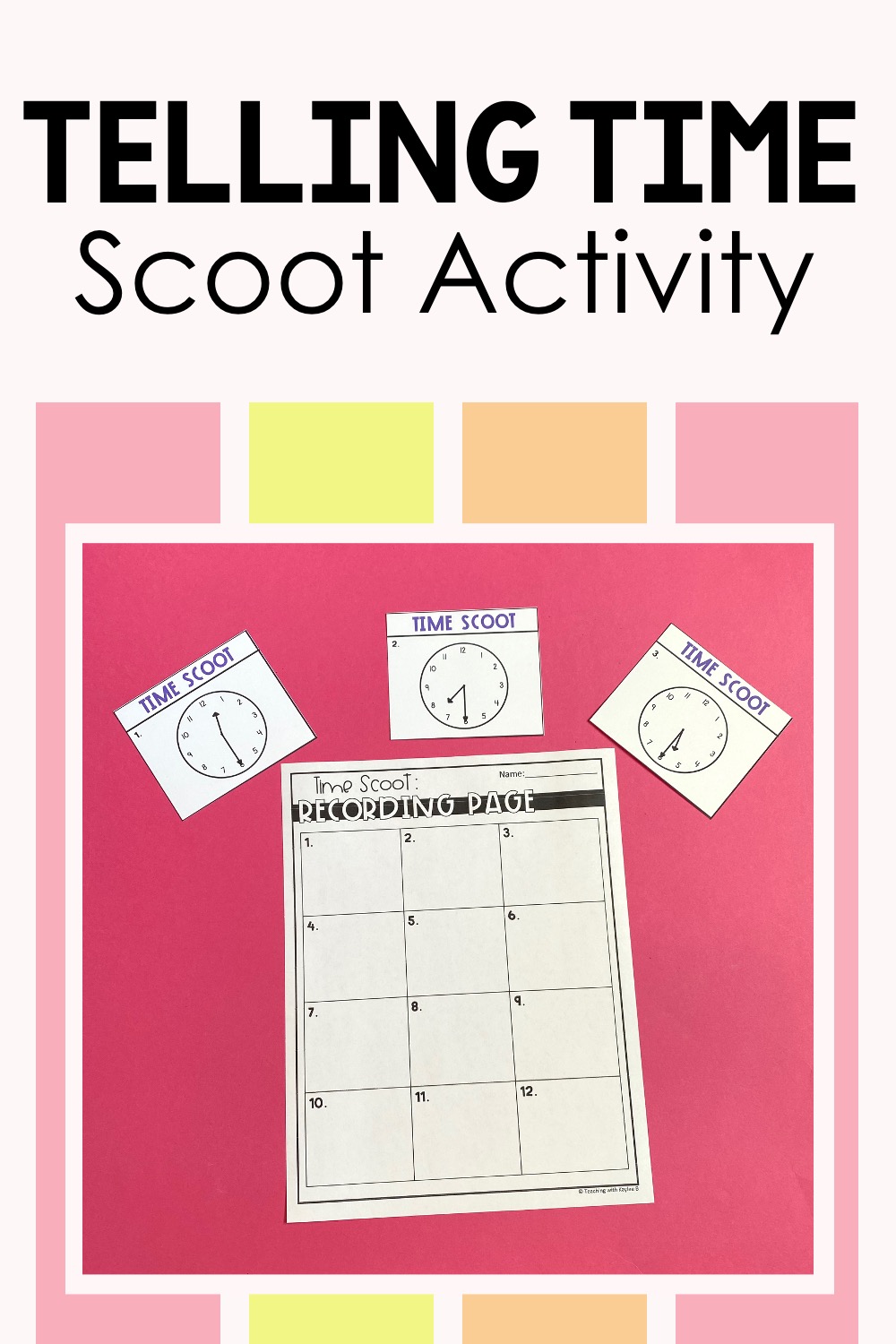
Get your student up and moving with this telling time scoot activity.
Again, I have different versions of this activity. So I start the beginning of the school year setting out the set that has times to the hour and half hour. Later on in the year I set out the other sets. These also make great center activities. Find this Telling Time Scoot Activity here.
Telling the Time Memory Match
My students love the game memory match. It’s a simple game that you can put lots of academic themes to. It works great for having students practice telling time as well. I have the matches with the time on an analog clock and then time in its digital form.
To play, students mix up the cards and set them face down in a grid. Students take turns turning over two cards. If they match they go again. They keep taking turns until all the cards are gone.
This activity works great as a center activity but I actually like to leave it out as a fast finisher activity for my students. I have 3 different versions like the other telling the time activities I have shared. Find this Telling Time Memory Match game here.
Telling Time 4 in a Row
This game is like bingo but instead of needing to get 5 in a row, students need to get 4 in a row to win. The playing boards have analog clocks and the call cards have the digital time. Students pick a calling card and then put a bingo marker on the matching analog clock. The first student to 4 in a row, wins.
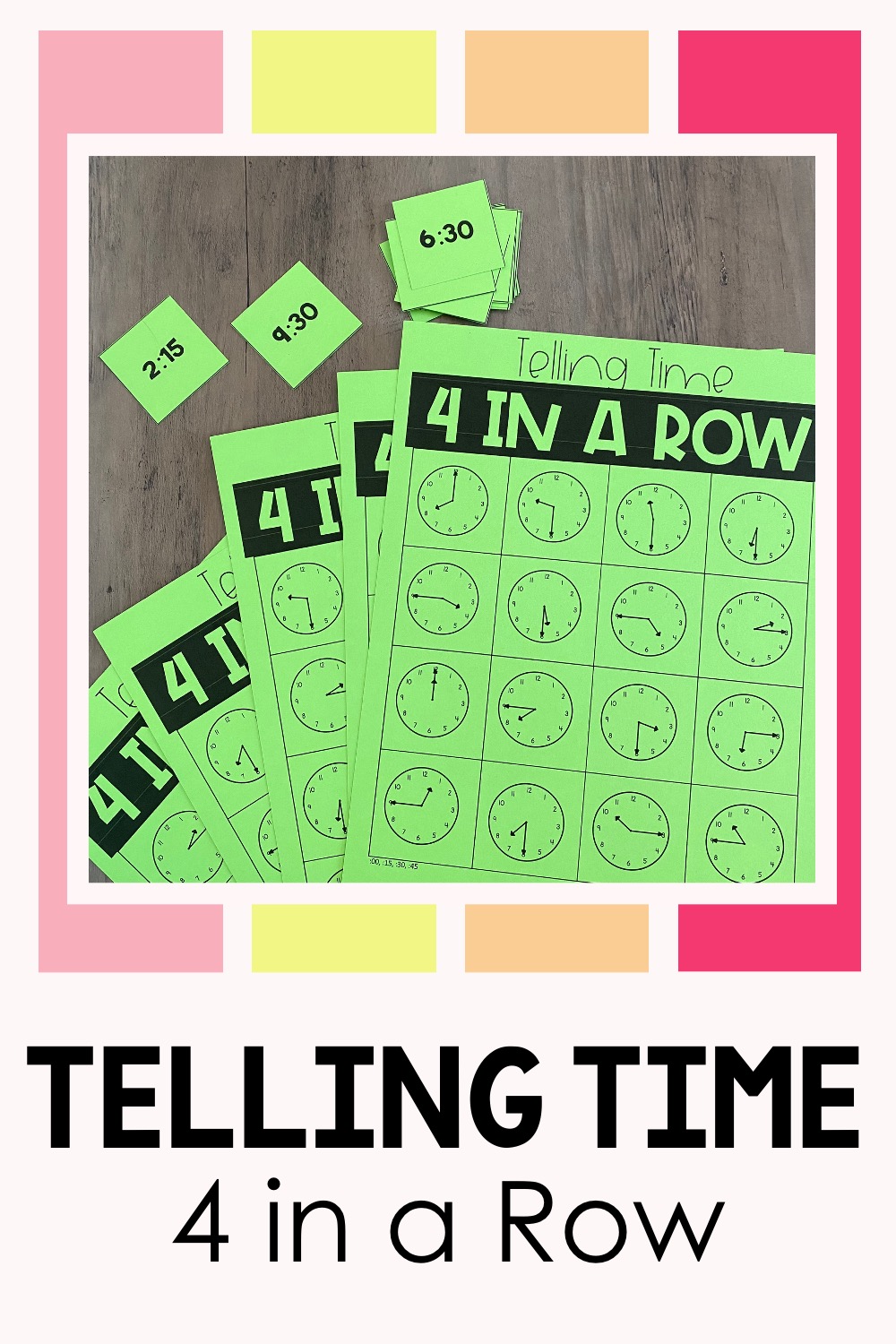
Your students will love learning how to tell time with this 4 in a row game.
Again there are different versions so I have students play the easier versions at the beginning of the year and then move on to the harder versions throughout the school year. Find this game here.
Telling the time can be hard for students. Especially if your curriculum only has a couple lessons teaching it. I have found that students find the most success if you teach it starting at the beginning of the school year and then give students lots of fun telling time activities. Find all the telling the time activities and games I’ve shared here.
Telling time is not the only standard that I like to start teaching at the beginning of the year. I do a similar thing with counting money. Read this blog post about more on how I do this: 5 Money Games 2nd Grade Students Love

Not only do I have my students play telling the time maths games, but I have them play math fact games as well. To learn more about the math fact games I have my students play to help practice math fact fluency, read this blog post here:
For more tips to getting your students to math fact mastery, download my free workbook for 1st and 2nd grade teachers: The 7 Steps to Ensure Math Fact Fluency

